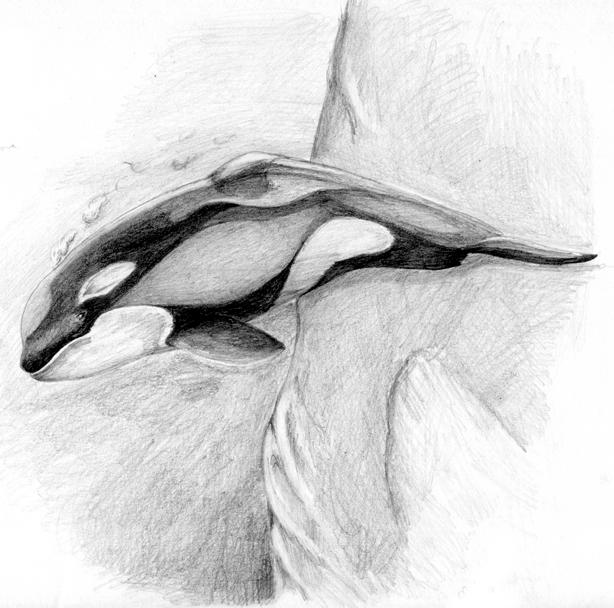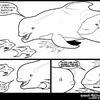
Finless Orca by @becca (Sykotic Orka)
Finless Orca
A descendant of the Antarctic sub-species, finless orcas evolved without the use of a dorsal fin, since it is a species that lives amongst permanent pack ice. It closely resembles, in body shape, a beluga with the exception that the finless orca has a more prominent “dorsal hump” which is filled with dense muscle and blubber. Finless orcas use the hump, aided by stockier bodies and thicker skulls, to break through ice while hunting prey.
Finless orcas still have the characteristic markings of the typical Orcinus orca, including eye patches, pale jaws, flank markings and saddles. Instead of being boldly marked with black and white the colours resemble that of it’s ice orca descendants, in shades of dirty grey and yellow, some bearing slate grey dorsal and skull capes and flank patches but are sufficient enough to blend in and break up it’s body shape in dark water and against ice. Despite it’s stocky appearance the finless orca is still a formidable predator, able to chase down prey and break apart ice floes and hunts either alone or in packs.
Size Stats:
Females: 15 – 18 feet 4 tons Dorsal hump, 1ft. Estimated life expectancy – 80 years
Males: 20 – 22 feet 6 tons Dorsal hump, foot and a half in height; in some individuals it can reach up to a two feet.
Estimated life expectancy – 50 - 80 years
Calves: 4 feet (estimate) 300 kgs (estimate) Non-existent dorsal hump. Usually forms after puberty at the age of 12 years for females, 15 for males.
Each gender has 12 pairs of interlocking, conical teeth.
Comments & Critiques (0)
Preferred comment/critique type for this content: Any Kind



Leave a Comment
You must be logged in and have an Active account to leave a comment.
Please, login or sign up for an account.